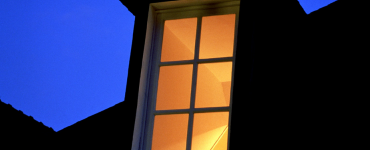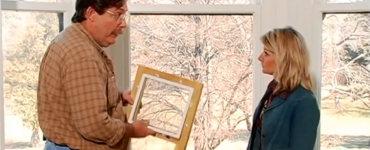Buying new windows
New window technology
Window myths
Read the labels
The National Fenestration Rating Council (NFRC) label shows how well a product will cool a building in the summer, warm a building in the winter, keep out wind, and resist condensation.
It lists the manufacturer, describes the product, provides a source for additional information, and includes ratings for one or more energy performance characteristics.
By using the information contained on the label, builders you can reliably compare one product with another, and make informed decisions about the windows, doors and skylights you buy.
You can also look for ENERGY STAR certification. This identifies appliances as being among the most energy-efficient products in their classes. They usually exceed minimum federal energy-use standards by a significant amount.
Understand the technology
The most energy-efficient type of window is a double-pane style filled with argon gas to slow heat transfer. It should also have a special coating called "low-e" (low-emissivity), which dissipates heat while letting light through.
Most window frame materials, including wood, vinyl or fiberglass, offer approximately the same energy efficiency. Some manufacturers offer vinyl-clad aluminum frames as well, but stay away from plain aluminum frames, which conduct a lot of heat. Also keep in mind that wood window frames, can warp over time, and require more maintenance than other materials.
The window style is also important - casement windows, which open with a crank or lever, are usually the most energy-efficient because they seal tighter against the window frame.
By nature of the design, double-hung windows are the draftiest - the sashes must be relatively loose to slide up and down. But keep in mind that new double-hung windows can be nearly twice as efficient as the old ones you’re replacing – especially if you choose models with argon gas and low-e coatings.
Take advantage of money-saving incentives
Before you make the final decision on your replacement windows, be sure to investigate rebates and other incentives from your utility company.
Some electric and gas providers offer cash-back rebates or low-interest financing for customers who invest in new energy-efficient windows. In many cases, the incentive amount can cover the added cost of upgrading to high-performance models.
Learn the jargon
Overwhelmed by all the jargon your window dealer uses? Check the window glossary below to find out what all those design terms and energy ratings mean.
Casement: A casement window opens with a crank or lever. Casement windows are usually more energy-efficient because the have fewer moving parts and seal tighter than double-hung windows.
Double-hung: These windows open by sliding up and down. With double-hung windows, both the upper and lower sashes are movable. In a single-hung window, only one sash is movable while the other is fixed.
Low-e: Shorthand for “low emissivity,” a measurement of how much heat a material radiates. Window manufacturers use invisible low-e coatings – made of metal oxide or even semiconductor material – on window panes to reduce the amount of heat radiating from the glass.
U-value: U-value, or U-factor, measures how much heat the window conducts. It's the converse of R-value - the lower the U-value the better. U-values can range from 1.1 to 0.3; a rating of 0.4 is considered high-efficiency.
Argon gas: Argon is an inert gas that window manufacturers seal between the panes of glass. Because the gas is inert, it acts as an insulator, drastically slowing the heat transfer through the window.
More from this category
Reflective window film
If sunny windows are turning your living spaces into a sauna, reflective window film can bring back the comfort and cut your air conditioning bills.
Restoring and repairing double hung windows
Our expert explains how to restore and repair your double hung windows instead of replacing them.
Exterior and garage doors
Improved materials and insulation help new doors stand up to weather and humidity - and keep heat where it belongs.




